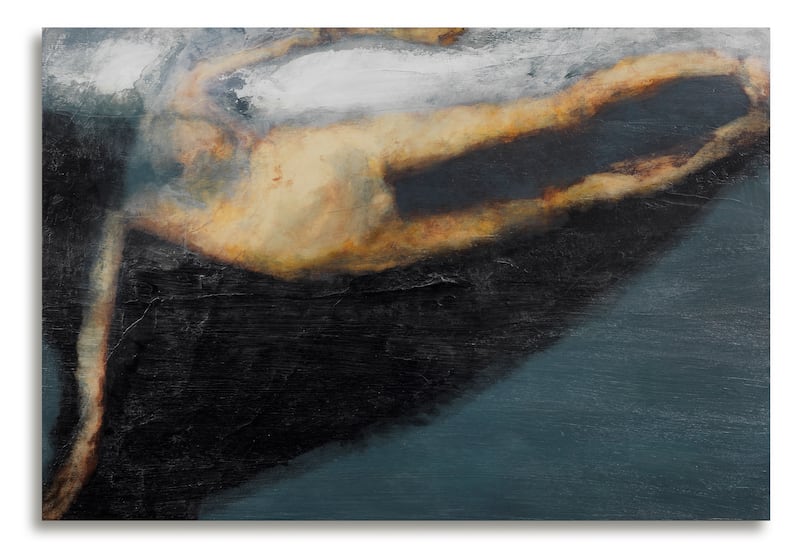It all started with a Bonhams’ sale where a piece of art struck a chord. Its title, Doolough: Lake of the Sandbanks, by Hughie O’Donoghue, sent a shiver down my spine.
What I was looking at were abstract views from a house I had just bought here in the wilds of north Mayo, where a swirling salt lake meanders inland from the ebb and flow of Blacksod Bay.

It transpires that Manchester-born O’Donoghue, whose work The Owl Run achieved €109,557 through Sotheby’s in 2019, has been coming to the Erris region since he was a child, playing barefoot in the elements with cousins, taking in the turf, collecting water and bits of mischief in between.
A big portion of his works were painted in, or inspired by the region. As his wife Clare remarks: “There are really so few of Hughie’s paintings that don’t have a connection — his first ever painting about London was only done last year.”
Snow White review: Live-action reimagining of the classic 1937 film is a muddled mess
Books: Vote for the best Irish fiction of the 21st century
Vernal equinox marks the emergence of spring
Áine Ní Bhreisleáin brings us on a wellness journey featuring Joe Wicks, yurt saunas and flinging beer bottles with vengeful abandon
Though having lived in Kilkenny with their children for 13 years at the rambling Kilfane Glebe, which he and Clare fully restored, the couple are now based between Erris and London — where his agent is.
The question of identity is a recurring theme in the artist’s work, and his current exhibition, Original Sins at the National Gallery, addresses this along with memory and history.
His mother left the Erris region to work in Manchester at a time when life in the wilds of north Mayo was hard. A small famine, when supply boats ceased bringing food to the area due to the first World War, saw hunger added to the hardship of no running water, toilets or electricity, through winds that cut like shards of glass.
His father Daniel too endured sadness when his family emigrated from Barraduff, just east of Killarney. “He was sent back to Kerry as a child of about two, where he spent seven years being raised by an aunt. When he went back to Manchester — which was a tough place then — he only spoke Irish, and it also felt like he’d lost his mother again.”
A good reason for sending his father back may have been the fact that his grandfather’s cousin, Paddy O’Donoghue, was the head of the IRA in Manchester. It was a tense time in England, Paddy had organised de Valera’s famous jail break from Lincoln Jail (for the third and final time) with a key masquerading in a fruit cake. He was also a close friend of Michael Collins, who was best man when he married Violet Gore. Collins, it is said, brought O’Donoghue into his intelligence and arms smuggling network in England as early as 1917.
And while hundreds gathered this week at Béal na Bláth to mark the centenary of the statesman’s death, a mammoth tarpaulin of “the big fella” hangs at the Original Sins exhibition to mark the decade of centenaries.
The series of colossal works in the Shaw Room sits in stark contrast to its Corinthian columns and the inspiration for the exhibition, The Marriage of Strongbow and Aoife by Daniel Maclise. At almost 17ft wide, it gazes down on O’Donoghue’s works that explore the association between Ireland and England.
Appearing ethereal is a giant St Deirbhile, the Irish saint who has significant links to Mayo, as her water shrine near Belmullet is believed to have curative properties. And subtly, in the corner of this work, O’Donoghue has added a small lighthouse — one of only two square beacons in the country. The local stone on its facade also graces Downing Street and the British Houses of Parliament, and from this tiny lighthouse at Blacksod, close to the tragedy of Rescue 116 in which a brave rescue team lost their lives, a weather report was sent on June 3rd, 1944, that convinced Gen Dwight Eisenhower to delay D-Day by 24 hours.
So what is it about this part of north Mayo that inspires his monumental works?
“I associate the region with a sense of liberation, in contrast to the terrible authoritarian schools of Manchester. Here, in the west of Ireland, it is more reflective; a slower mindset about more fundamental things. I can develop ideas without any pressure.”
In a curious twist of fate, Clare also has family from this region in Mayo, where the couple now live. However, due to the fact that her great-grandmother emigrated in the 1850s — a full generation before O’Donoghue’s clan — they did not discover this fact until about 20 years into their relationship.
And in yet another twist of fate, O’Donoghue believes his maternal grandmother, who walked 10 miles on the day of her wedding in Geesala to live with the new in-laws in Bangor, has links to the house that I’ll soon call home.
It’s a small world up here.
















